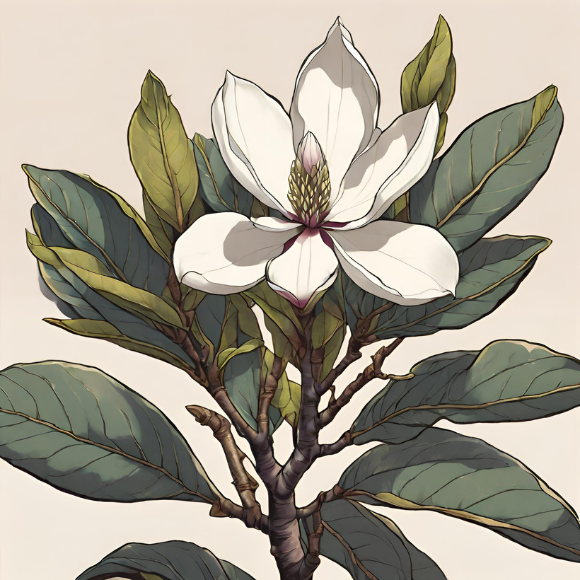
Overview
Ashe’s Magnolia, scientifically known as Magnolia ashei, is a distinctive deciduous tree renowned for its large, fragrant flowers and unique ecological significance. Native to the southeastern United States, particularly in the sandhill regions of Florida and Georgia, this magnolia species has specific requirements for optimal growth. This plant profile will provide insights into the soil, sun, and watering needs, as well as the recommended hardiness zones for cultivating Ashe’s Magnolia.
Description
Foliage: Ashe’s Magnolia features large, elliptical leaves that are typically green on the upper surface and silver-gray underneath. The foliage adds a lush and vibrant element to the landscape.
Flowers: One of the hallmark features of Ashe’s Magnolia is its impressive flowers. These blooms, which appear in late Spring to early Summer, are large and cup-shaped, with a white to creamy-yellow coloration. The flowers emit a delightful fragrance, attracting pollinators such as bees and butterflies.
Size: This magnolia species is a medium-sized tree, reaching heights of 20 to 30 feet with a comparable spread. Its rounded canopy provides ample shade and creates an appealing silhouette in the garden.
Soil Requirements: Ashe’s Magnolia thrives in well-drained, acidic to slightly acidic soils. A pH range between 5.0 and 6.5 is considered ideal for this species. The tree has a natural preference for sandy or loamy soils, mirroring its native habitat in sandhill ecosystems. Ensuring good drainage is crucial, as Ashe’s Magnolia does not tolerate waterlogged conditions.
Sun Requirements: This magnolia variety flourishes in full to partial sunlight. Providing Ashe’s Magnolia with at least six hours of direct sunlight each day is optimal for robust growth and prolific flowering. While it can tolerate partial shade, especially in the afternoon to protect against intense heat, a balance that allows for sufficient sunlight is key to its overall health and performance.
Watering Needs: Ashe’s Magnolia benefits from a consistent and moderate watering schedule, particularly during periods of drought. While the tree is relatively drought-tolerant once established, regular watering, especially in the first few years after planting, helps promote healthy root development. It is crucial to allow the soil to dry between watering sessions to prevent waterlogged conditions, which can be detrimental to the tree’s health.
Hardiness Zones: Ashe’s Magnolia is well-suited for cultivation in USDA hardiness zones 7 to 9. This encompasses a range of climates, from the relatively mild Winters of zone 9 to the cooler temperatures of zone 7. In these zones, Ashe’s Magnolia exhibits optimal growth and resilience, adapting well to the temperature fluctuations characteristic of the southeastern United States.
Zone 7: In colder regions within its hardiness range, Ashe’s Magnolia may benefit from protection during unusually harsh Winters, such as mulching around the base to insulate the roots.
Zones 8-9: Ashe’s Magnolia thrives in these zones, provided it receives the appropriate soil conditions, sunlight, and watering practices.
Maintenance
Pruning: Regular pruning is generally not required for Ashe’s Magnolia, as it has a naturally pleasing form. However, occasional pruning to remove dead or diseased branches can enhance the tree’s overall health and appearance.
Mulching: Applying a layer of organic mulch around the base helps conserve soil moisture, suppress weeds, and regulate soil temperature, contributing to the well-being of Ashe’s Magnolia.
Fertilization: While mature trees generally do not require extensive fertilization, young trees may benefit from a balanced, slow-release fertilizer in early Spring to support healthy growth.
Ashe’s Magnolia, with its captivating blooms and distinctive foliage, is a valuable addition to gardens in the southeastern United States. By understanding and meeting its specific soil, sun, and watering requirements, gardeners can cultivate a thriving Ashe’s Magnolia that not only enhances the aesthetic appeal of the landscape but also contributes to the ecological diversity of its native habitat.


 Previous
Previous

